
Bohol: An Island Paradise of Natural Wonders
Discover Bohol: A tropical haven in the Philippines, famous for its Chocolate Hills, pristine beaches, rich marine life, and cultural heritage.
Situated in the heart of the Philippines, Bohol is a gem waiting to be discovered. Known for its stunning natural beauty, Bohol offers a unique travel experience that seamlessly blends relaxation and adventure. From the iconic Chocolate Hills to the pristine white sandy beaches of Panglao Island, Bohol is a visual feast for nature lovers and beachgoers alike. One of the must-visit attractions in Bohol is the Chocolate Hills, a geological formation consisting of over a thousand hills that turn brown during the dry season, resembling chocolate mounds. Another fascinating natural wonder is the Tarsier Sanctuary, where you can observe one of the world's smallest primates in its natural habitat. These tiny creatures are nocturnal and incredibly delicate, making the sanctuary a special place for conservation and education. For those seeking underwater adventures, Bohol does not disappoint. The waters surrounding the island are teeming with marine life, making it a popular destination for diving and snorkeling. Alona Beach on Panglao Island is a fantastic starting point for exploring vibrant coral reefs and encountering a variety of sea creatures. Dolphin and whale watching tours are also available, providing an unforgettable experience. Bohol is not just about natural attractions. The island is rich in history and culture, with several centuries-old churches such as the Baclayon Church and the Loboc Church offering a glimpse into the Spanish colonial past. The Loboc River Cruise is another cultural activity that combines sightseeing with traditional Filipino music and cuisine, allowing you to enjoy a leisurely boat ride through lush greenery while savoring local delicacies.
Local tips in Bohol
- Visit the Chocolate Hills early in the morning or late in the afternoon to avoid crowds and capture the best photos.
- Wear comfortable walking shoes when visiting the Tarsier Sanctuary, as the paths can be uneven.
- Book your diving and snorkeling trips in advance, especially during peak seasons, to ensure availability.
- Try the local delicacy, 'Calamay,' a sweet sticky rice cake, for an authentic taste of Bohol.
- Rent a scooter or motorbike to explore the island at your own pace, but always wear a helmet and drive cautiously.
- Respect local customs and dress modestly when visiting churches and religious sites.
Neighbourhoods in Bohol
Bohol: An Island Paradise of Natural Wonders
Situated in the heart of the Philippines, Bohol is a gem waiting to be discovered. Known for its stunning natural beauty, Bohol offers a unique travel experience that seamlessly blends relaxation and adventure. From the iconic Chocolate Hills to the pristine white sandy beaches of Panglao Island, Bohol is a visual feast for nature lovers and beachgoers alike. One of the must-visit attractions in Bohol is the Chocolate Hills, a geological formation consisting of over a thousand hills that turn brown during the dry season, resembling chocolate mounds. Another fascinating natural wonder is the Tarsier Sanctuary, where you can observe one of the world's smallest primates in its natural habitat. These tiny creatures are nocturnal and incredibly delicate, making the sanctuary a special place for conservation and education. For those seeking underwater adventures, Bohol does not disappoint. The waters surrounding the island are teeming with marine life, making it a popular destination for diving and snorkeling. Alona Beach on Panglao Island is a fantastic starting point for exploring vibrant coral reefs and encountering a variety of sea creatures. Dolphin and whale watching tours are also available, providing an unforgettable experience. Bohol is not just about natural attractions. The island is rich in history and culture, with several centuries-old churches such as the Baclayon Church and the Loboc Church offering a glimpse into the Spanish colonial past. The Loboc River Cruise is another cultural activity that combines sightseeing with traditional Filipino music and cuisine, allowing you to enjoy a leisurely boat ride through lush greenery while savoring local delicacies.
When is the best time to go to Bohol?
Iconic landmarks you can’t miss
Chocolate Hills Complex
Explore the breathtaking Chocolate Hills Complex in Bohol, a UNESCO World Heritage Site featuring unique geological formations and rich cultural heritage.
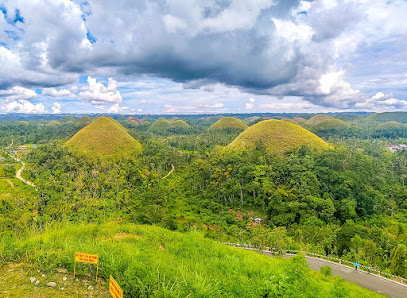
Loboc River Cruise
Experience the enchanting Loboc River Cruise in Bohol, where nature, culture, and relaxation meet in perfect harmony.

Bohol Tarsier Conservation Area
Explore the Bohol Tarsier Conservation Area, a sanctuary for the world's smallest primates amidst lush tropical surroundings in the Philippines.

Chocolate Hills Natural Monument
Discover the breathtaking Chocolate Hills in Bohol, a unique natural wonder featuring over 1,200 hills, perfect for hiking and stunning photography.
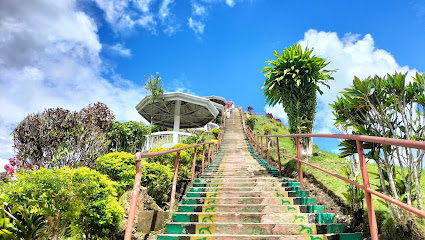
Baclayon Church
Explore the rich history and breathtaking architecture of Baclayon Church, one of the oldest stone churches in the Philippines, nestled in the scenic Bohol region.

Blood Compact Shrine
Explore the historical Blood Compact Shrine in Tagbilaran City, a monument of friendship symbolizing the first treaty between Filipinos and Spaniards.

Bilar Man-Made Forest
Discover the breathtaking beauty of Bilar Man-Made Forest in Bohol, Philippines, a serene escape into nature's enchanting embrace.

Chocolate Hills
Explore the breathtaking Chocolate Hills of Bohol, a geological wonder with over 1,200 unique hills that create a chocolate-like landscape during dry season.

Chocolate Hills View Point
Experience the breathtaking vistas of the Chocolate Hills from the stunning observation deck in Bohol, a must-visit destination for nature lovers.

ShipHaus
ShipHaus in Bohol: A unique architectural marvel resembling a ship, surrounded by breathtaking landscapes perfect for your travel photos.

Chocolate Hills Adventure Park
Discover the thrilling adventures and breathtaking views at Chocolate Hills Adventure Park, a must-visit destination in Bohol, Philippines.

Panglao Watchtower
Explore the stunning Panglao Watchtower, a historical landmark offering breathtaking views and a peek into Bohol's rich cultural heritage.

Sagbayan Peak
Discover the breathtaking views and lush landscapes at Sagbayan Peak, a must-visit tourist attraction in the heart of Bohol, Philippines.
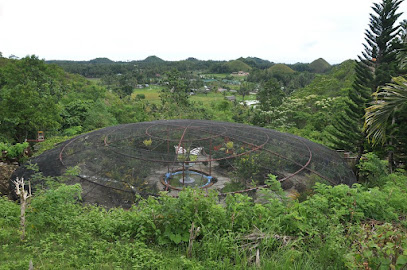
Punta Cruz Watchtower
Experience the captivating blend of history and nature at Punta Cruz Watchtower, a unique triangular structure with stunning coastal views in Bohol.

Abatan River Community Life Tour
Explore the Abatan River in Bohol, immersing in stunning nature and vibrant local culture through engaging tours and enchanting firefly evenings.

Unmissable attractions to see
Chocolate Hills Complex
Discover the breathtaking Chocolate Hills Complex in Bohol, a UNESCO World Heritage site renowned for its unique geological formations and stunning landscapes.

Loboc River Cruise
Discover the beauty of Bohol with the enchanting Loboc River Cruise, a perfect blend of nature and culture in the heart of the Philippines.

Bohol Tarsier Conservation Area
Explore the Bohol Tarsier Conservation Area, a unique sanctuary for the world's smallest primates, nestled in the lush landscapes of Bohol, Philippines.

Philippine Tarsier Sanctuary
Explore the Philippine Tarsier Sanctuary in Corella, Bohol, home to the world's smallest primates, and immerse yourself in conservation and nature.
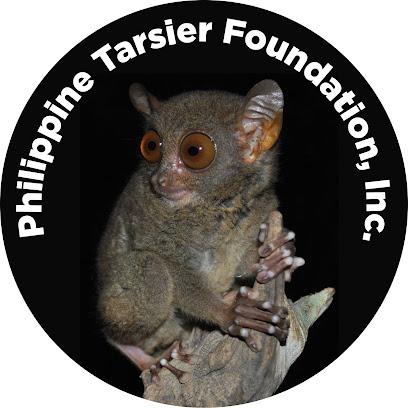
Baclayon Church
Explore the majestic Baclayon Church, a historic Catholic gem in Bohol, showcasing exquisite architecture and rich cultural heritage.

Blood Compact Shrine
Explore the Blood Compact Shrine in Tagbilaran City, a historic landmark symbolizing friendship and unity between cultures in the heart of Bohol.

Bilar Man-Made Forest
Explore the serene beauty of Bilar Man-Made Forest, a stunning reforested area in Bohol that captivates with its towering trees and tranquil pathways.

Sikatuna Mirror of The World
Discover the serene beauty of Sikatuna Mirror of The World, a breathtaking park in Bohol offering lush landscapes and a tranquil escape into nature.

Xzootic Animal Park
Experience the beauty of nature at Xzootic Animal Park in Loboc, Bohol, where wildlife education meets unforgettable adventure.

Baclayon Art Museum
Explore the beauty of Filipino artistry at Baclayon Art Museum, a cultural haven in Bohol filled with captivating artworks and rich history.

Napaling Reef
Explore the vibrant marine life and stunning coral gardens at Napaling Reef, a premier snorkeling and diving destination in Panglao, Bohol.
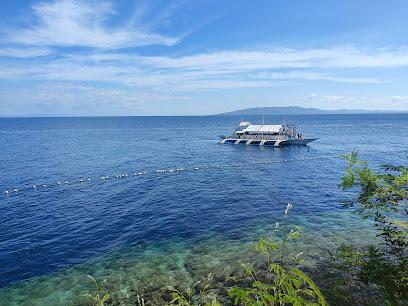
Balicasag Marine Sanctuary
Discover the enchanting Balicasag Marine Sanctuary, a vibrant underwater paradise teeming with marine life and breathtaking coral reefs in Bohol, Philippines.

Chocolate Hills View Point
Explore the stunning vistas at Chocolate Hills View Point, where nature's artistry meets breathtaking landscapes in Bohol, Philippines.

South Farm Panglao Bohol
Experience the beauty of nature and the charm of local farming at South Farm in Panglao, Bohol – a perfect escape for tourists seeking tranquility.

ShipHaus
Experience the artistic wonder of ShipHaus in Bohol, a unique tourist attraction that combines stunning architecture with the beauty of nature.

Essential places to dine
Bohol Bee Farm
Discover the charm of sustainable dining at Bohol Bee Farm—where every meal celebrates organic freshness and local flavors.

MIST
Discover MIST in Panglao - where local flavors meet global cuisine in an enchanting setting.
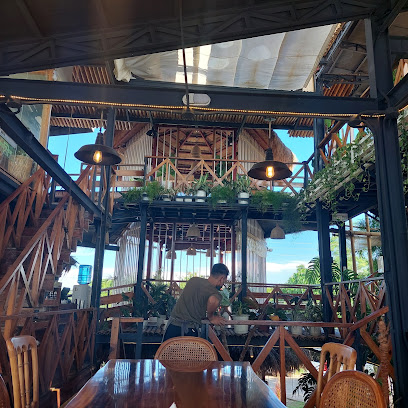
BARWOO
Discover BARWOO: A fusion restaurant in Panglao offering innovative Asian-inspired dishes in a vibrant setting.

Giuseppe Pizzeria & Sicilian Roast Bohol
Savor authentic Italian cuisine at Giuseppe Pizzeria & Sicilian Roast in Panglao - a culinary gem offering delicious pizzas and roasts.

ubeco
Discover exquisite Pan-Asian flavors at Ubeco in Panglao - a culinary haven blending taste and ambiance for every palate.

The Prawn Farm
Experience the best of Bohol's seafood at The Prawn Farm – where fresh flavors meet casual dining.

Bamboo Place
Discover Bamboo Place in Panglao Island - where exquisite flavors meet vibrant nightlife in a tropical paradise.

JJ's SEAFOOD VILLAGE
Discover a gastronomic paradise at JJ's Seafood Village - where fresh flavors meet Bohol’s rich culinary traditions.

Bougainvillea Spanish Restaurant and Wine Bar
Experience authentic Spanish flavors at Bougainvillea in Panglao – where every meal is a celebration of taste and tradition.

La Familia
Discover authentic Filipino cuisine at La Familia in Panglao - where every meal is a celebration of local flavors.

Gerarda's Place
Discover authentic Boholano cuisine at Gerarda's Place in Tagbilaran City – where every dish tells a story.

Lantaw Native Restaurant Bohol
Experience authentic Filipino flavors and breathtaking views at Lantaw Native Restaurant in Tagbilaran City, Bohol.

The Buzzz Cafe
Experience fresh organic delights at The Buzzz Cafe in Panglao - where local flavors meet breathtaking beach views.

Fortridge Food Park
Experience delightful flavors at Fortridge Food Park in Bohol - where local ingredients meet culinary creativity in a picturesque setting.

Kun's Stick and Bowl
Discover authentic Asian flavors at Kun's Stick and Bowl in Panglao - A must-visit culinary destination for food lovers exploring Bohol.

Markets, malls and hidden boutiques
BQ Mall
Explore BQ Mall in Tagbilaran for a unique shopping experience with diverse stores, delicious dining options, and cultural events to discover.

Alturas Supermarket
Discover the flavors of Bohol at Alturas Supermarket, your one-stop shop for local products and fresh produce in Tagbilaran City.

Moadto Strip Mall
Experience the blend of culture and shopping at Moadto Strip Mall in Panglao, a must-visit destination for every traveler in Bohol.

Aproniana Gift Shop
Explore the vibrant Aproniana Gift Shop in Baclayon, Bohol, and discover unique local souvenirs that capture the island's rich culture and artistry.
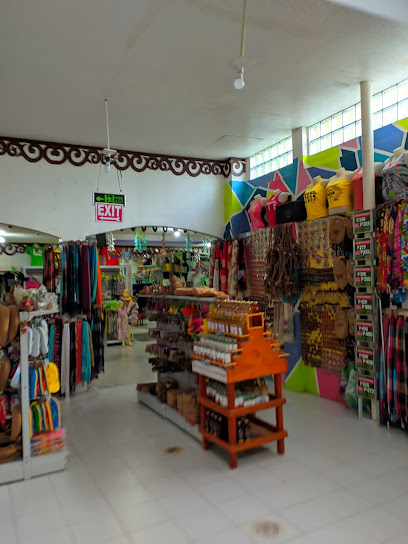
Island City Mall Boutique
Explore Island City Mall Boutique in Bohol for a delightful shopping and dining experience, where local charm meets modern retail.

Yool's Souvenir shop
Discover authentic Filipino crafts at Yool's Souvenir Shop in Panglao, a treasure trove of unique souvenirs and local artistry.

BQ Department Store
Discover local shopping treasures and vibrant culture at BQ Department Store in Tagbilaran City, your go-to destination for diverse products.

alona hidden dream store
Discover local treasures and everyday essentials at Alona Hidden Dream Store - your one-stop shopping destination in Panglao, Bohol.

Bool junction tagbilaran City
Explore Bool Junction in Tagbilaran City for unique Bohol souvenirs that capture the island's charm and culture.

HOBARE Store Inc
Discover top-notch hospitality supplies at HOBARE Store Inc in Bohol, catering to all your restaurant and hotel needs.
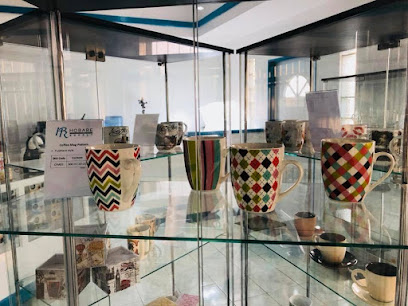
Swing's Tagbilaran
Discover a vibrant gift shop in Tagbilaran City, Bohol, offering unique fashion accessories, home goods, and souvenirs reflecting local culture.

Bohol Online Store
Experience Bohol's local flavors with the convenience of grocery delivery from the Bohol Online Store, your gateway to fresh and authentic produce.

PANGLAO GIFT SHOP
Explore the Panglao Gift Shop for authentic Bohol souvenirs and local crafts that capture the island's rich culture and artistry.

Islands Souvenirs - Tawala Panglao
Explore Islands Souvenirs in Panglao for unique Filipino crafts and gifts that capture the beauty and culture of the Philippines.

Bohol Gift Station
Explore Bohol Gift Station for authentic souvenirs and local crafts that capture the essence of Bohol's rich culture.

Essential bars & hidden hideouts
Paddy’s Irish Beer Pub and Restaurant
Discover the lively Paddy's Irish Beer Pub and Restaurant in Panglao, Bohol, where Irish warmth meets Filipino hospitality.

Jasz Bar & Restaurant
Experience the vibrant flavors of Bohol at Jasz Bar & Restaurant, your ultimate dining destination near Alona Beach.

Quinale Beach Bar
Discover the vibrant charm of Quinale Beach Bar in Anda, Bohol, where stunning views and delicious flavors create an unforgettable tropical escape.

Aluna Beach Lounge
Discover the vibrant atmosphere of Aluna Beach Lounge, where stunning ocean views and delightful flavors create a perfect beachside escape.

Cóclea Lounge Bar
Experience the vibrant nightlife of Bohol at Cóclea Lounge Bar, where relaxation meets lively ambiance in Tagbilaran City.

Destino
Discover the vibrant bar scene at Destino in Panglao, Bohol, where refreshing drinks and lively entertainment await in a stunning tropical setting.
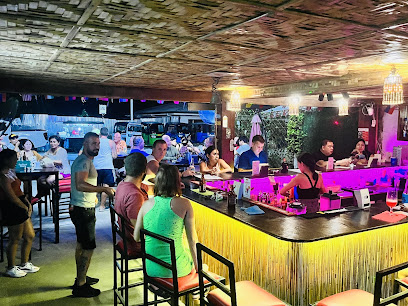
The Monkey Bar by Chef Jenzel Fontilla
Discover the vibrant flavors and stunning views at The Monkey Bar in Panglao, where culinary creativity meets a lively atmosphere.

Rumor Draft Bar and Restaurant
Experience the vibrant culinary scene of Panglao at Rumor Draft Bar and Restaurant, where local flavors meet international flair in a stunning beachside setting.

Spindrift Restobar Lite Port
Discover the lively ambiance of Spindrift Restobar in Tagbilaran, where refreshing drinks and delectable dishes await every visitor.

Udo's Bar
Experience the vibrant beachside atmosphere of Udo's Bar in Panglao, where refreshing cocktails and stunning ocean views await.
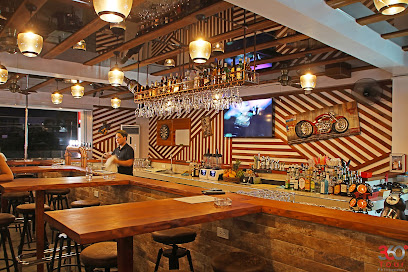
Salt & Sky Rooftop Lounge
Discover a rooftop paradise at Salt & Sky Lounge in Panglao, where breathtaking views and vibrant cocktails meet the tropical ambiance of Bohol.
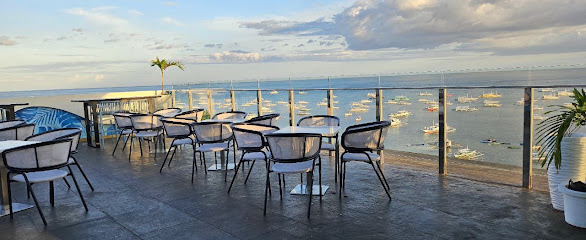
Jeff's Bar..k
Experience the vibrant atmosphere and delightful Asian cuisine at Jeff's Bar..k in the beautiful Panglao, Bohol.

Rocky's Bistro and Lounge
Discover the vibrant flavors of Rocky's Bistro and Lounge, a top bar and grill destination in Panglao, Bohol, perfect for food lovers and night owls.

Bugsay Bar
Experience the vibrant atmosphere of Bugsay Bar in Panglao, Bohol – where tropical drinks meet stunning island views.

Palo Beach Bar
Experience the serene charm of Palo Beach Bar, where delightful grilled flavors meet breathtaking beach views in Bohol.
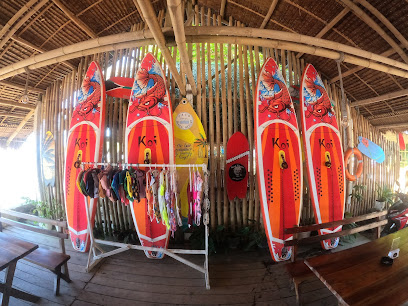
Local Phrases
-
- HelloKumusta
[koo-moo-stah] - GoodbyeAdios
[ah-dee-ohs] - YesOo
[oh-oh] - NoDili
[dee-lee] - Please/You're welcomePalihug
[pah-lee-hoog] - Thank youSalamat
[sah-lah-mat] - Excuse me/SorryPasayloa ko
[pah-sigh-loh-ah koh] - How are you?Kumusta ka?
[koo-moo-stah kah] - Fine. And you?Maayo. Ikaw?
[mah-ah-yoh. ee-kahw] - Do you speak English?Kahibalo ka og Iningles?
[kah-hee-bah-loh kah ohg een-eeng-glehs] - I don't understandDili ko kasabot
[dee-lee koh kah-sah-boht]
- HelloKumusta
-
- I'd like to see the menu, pleaseGusto ko makita ang menu, palihug
[goo-stoh koh mah-kee-tah ahng meh-noo, pah-lee-hoog] - I don't eat meatDili ko kaon ug karne
[dee-lee koh kah-ohn oog kahr-neh] - Cheers!Mabuhi!
[mah-boo-hee] - I would like to pay, pleaseGusto ko mobayad, palihug
[goo-stoh koh moh-bah-yahd, pah-lee-hoog]
- I'd like to see the menu, pleaseGusto ko makita ang menu, palihug
-
- Help!Tabang!
[tah-bahng] - Go away!Ig-awas!
[ee-gah-wahs] - Call the Police!Tawga ang pulis!
[tahwgah ahng poo-lees] - Call a doctor!Tawga ug doctor!
[tahwgah oog dahk-tohr] - I'm lostNawala ko
[nah-wah-lah koh] - I'm illSakit ko
[sah-keet koh]
- Help!Tabang!
-
- I'd like to buy...Gusto ko molit-ag...
[goo-stoh koh moh-lee-tahg] - I'm just lookingNagtan-aw lang ko
[nahg-tahn-ahw lahng koh] - How much is it?Tagpila ni?
[tahg-pee-lah nee] - That's too expensiveMahal kaayo
[mah-hahl kah-ah-yoh] - Can you lower the price?Pwede magbarat?
[pweh-deh mahg-bah-raht]
- I'd like to buy...Gusto ko molit-ag...
-
- What time is it?Unsa oras na?
[oon-sah oh-rahs nah] - It's one o'clockAlas uno na
[ah-lahs oo-noh nah] - Half past (10)Alas diyes y medya
[ah-lahs deeh-yes ee mehd-yah] - MorningBuntag
[boon-tahg] - AfternoonHapon
[hah-pohn] - EveningGabii
[gah-bee] - YesterdayKahapon
[kah-hah-pohn] - TodayKaron
[kah-rohn] - TomorrowUgma
[oog-mah] - 1Usa
[oo-sah] - 2Duha
[doo-hah] - 3Tulo
[too-loh] - 4Upat
[oo-paht] - 5Lima
[lee-mah] - 6Unom
[oo-nom] - 7Pito
[pee-toh] - 8Walo
[wah-loh] - 9Siyam
[see-yahm] - 10Napulo
[nah-poo-loh]
- What time is it?Unsa oras na?
-
- Where's a/the...?Asa ang...?
[ah-sah ahng] - What's the address?Unsa ang address?
[oon-sah ahng ah-drehs] - Can you show me (on the map)?Pwede mo ipakita nako (sa mapa)?
[pweh-deh moh ee-pah-kee-tah nah-koh sah mah-pah] - When's the next (bus)?Kanus-a ang sunod (bus)?
[kah-noo-sah ahng soo-nohd] - A ticket (to ....)Bilhete (paingon sa ....)
[beel-hey-teh pah-ee-ngohn sah]
- Where's a/the...?Asa ang...?
History of Bohol
-
Before the arrival of the Spanish, Bohol was inhabited by the indigenous people known as the Eskaya. They had their own language and script, which were unique to the island. The island was also part of the expansive trade network in Southeast Asia, engaging in commerce with neighboring islands and countries.
-
One of the most significant historical events in Bohol is the Blood Compact or Sandugo between Spanish explorer Miguel López de Legazpi and Datu Sikatuna, the chieftain of Bohol, on March 16, 1565. This event is considered the first treaty of friendship between Spaniards and Filipinos, symbolizing the establishment of amicable relations.
-
During the Spanish colonial period, Bohol was incorporated into the Spanish East Indies and became a part of the province of Cebu until 1854, when it was established as a separate politico-military province. The Spanish influence is evident in the architecture of several old churches, including the Baclayon Church, one of the oldest in the Philippines.
-
The Dagohoy Rebellion, led by Francisco Dagohoy, is the longest revolt in Philippine history, lasting from 1744 to 1829. The rebellion was a reaction to Spanish oppression, particularly the forced labor and excessive tribute. Dagohoy's followers established a free community in the mountains of Bohol that resisted Spanish rule for 85 years.
-
After the Spanish-American War, Bohol came under American rule in 1898. The Americans introduced a new public school system and improved infrastructure. Despite these advancements, Boholanos continued to resist foreign rule, leading to the establishment of the Boholano resistance movement against American forces.
-
During World War II, Bohol was occupied by Japanese forces from 1942 until 1945. The island was a site of numerous guerrilla activities, with the local resistance playing a significant role in sabotaging Japanese operations. The province was liberated by combined Filipino and American troops in April 1945.
-
In 1946, shortly after the Philippines gained independence from the United States, Bohol was officially recognized as an independent province. Since then, it has developed its own local government and has grown both economically and culturally, evolving into a popular tourist destination.
-
The Chocolate Hills are one of Bohol’s most iconic natural landmarks. These geological formations consist of at least 1,260 hills spread over an area of more than 50 square kilometers. During the dry season, the grass covering these hills turns brown, resembling chocolate mounds, hence the name. The hills have become a symbol of the island and attract numerous tourists annually.
-
The Philippine tarsier, one of the world's smallest primates, finds refuge in Bohol's Tarsier Sanctuary. This conservation area aims to protect the endangered species and educate the public about its significance. The tarsier has become a beloved symbol of Bohol’s rich biodiversity.
Bohol Essentials
-
Bohol is accessible via air and sea. The main airport is Bohol-Panglao International Airport, which offers flights from Manila, Cebu, and other major cities. From Cebu, ferries run regularly to Tagbilaran City, the capital of Bohol, as well as to other ports like Tubigon. Fast crafts and regular ferries are available, with travel times ranging from 1.5 to 2 hours.
-
Getting around Bohol is relatively easy. Tricycles and motorbikes are common for short distances. For longer trips, you can hire a car or van with a driver. Public buses and jeepneys connect major towns and tourist spots. Renting a scooter is also a popular option for those wanting more freedom to explore.
-
The official currency in Bohol is the Philippine Peso (PHP). Credit cards are accepted in most hotels, restaurants, and larger shops, but cash is preferred in smaller establishments and rural areas. ATMs are available in Tagbilaran City and major tourist areas, but it's advisable to carry sufficient cash when traveling to more remote locations.
-
Bohol is generally a safe destination for tourists. However, standard precautions should be taken. Avoid displaying valuables, especially in crowded places. While crime rates are low, it's best to stay vigilant. Areas like Tagbilaran City and Panglao are safe but always be cautious in less populated areas after dark. Pickpocketing can occur in crowded tourist spots, so keep an eye on your belongings.
-
In case of emergency, dial 911 for immediate assistance. Hospitals and medical facilities are available in Tagbilaran City and other major towns. It's recommended to have travel insurance that covers medical emergencies. Pharmacies are widespread, and over-the-counter medications can be easily purchased. For police assistance, look for the nearest police station or tourist police.
-
Fashion: Do dress modestly, especially when visiting religious sites. Avoid overly revealing clothing. Religion: Do show respect for local customs and traditions. Remove your shoes when entering churches or homes. Public Transport: Do be courteous and give up your seat to elderly passengers. Don't eat or drink on public transportation. Greetings: Do greet people with a smile or a friendly 'hello.' A slight bow of the head is a sign of respect. Eating & Drinking: Do try local delicacies and accept food offerings graciously. Don't refuse hospitality as it is considered impolite.
-
To experience Bohol like a local, visit the local markets in Tagbilaran City and other towns. Engage with the locals, who are known for their hospitality and friendliness. Don't miss the chance to see the Chocolate Hills, Tarsier Sanctuary, and Loboc River Cruise. For a unique experience, visit during the Sandugo Festival in July, which commemorates the blood compact between Datu Sikatuna and Miguel López de Legazpi.
Trending Landmark in Bohol
-
Chocolate Hills Complex
-
Loboc River Cruise
-
Bohol Tarsier Conservation Area
-
Chocolate Hills Natural Monument
-
Baclayon Church
-
Blood Compact Shrine
-
Bilar Man-Made Forest
-
Chocolate Hills
-
Chocolate Hills View Point
-
ShipHaus
-
Chocolate Hills Adventure Park
-
Panglao Watchtower
-
Sagbayan Peak
-
Punta Cruz Watchtower
-
Abatan River Community Life Tour
Nearby Cities to Bohol
-
Things To Do in Cebu City
-
Things To Do in Camiguin
-
Things To Do in Cagayan de Oro
-
Things To Do in Siargao
-
Things To Do in Boracay
-
Things To Do in Davao City
-
Things To Do in Legazpi
-
Things To Do in Zamboanga City
-
Things To Do in Tagaytay
-
Things To Do in Puerto Princesa
-
Things To Do in Manila
-
Things To Do in Palawan
-
Things To Do in Subic
-
Things To Do in Angeles City
-
Things To Do in Sandakan















